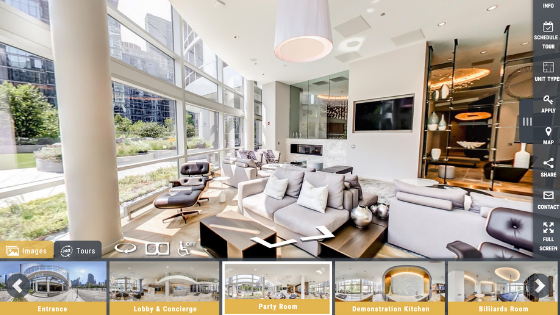4 Ways a Senior Living Virtual Tour Makes the Transition Easier
When it's time for a senior to move into a senior living community, the transition isn't just hard on seniors, but rather the entire family.
3 min read
 McKenna Hogan
:
Jun 5, 2019 9:00:00 AM
McKenna Hogan
:
Jun 5, 2019 9:00:00 AM

Finding a senior living home for a loved one can be emotional, draining, and can even feel impossible. Consumers are tasked with finding a community that looks and feels like an actual home. While services and employees are undoubtedly high in importance, the physical nature of a home has proven to be just as essential.
This makes transparency key in increasing your senior living sales.
This process is a bit different than just finding a home. It could take months—even years—to find the perfect fit. That’s why 360 virtual tours are being used by senior living homes to increase accessibility and alleviate stress.
The United States Census Bureau states that mobility is the most common disability among older Americans.
Often times families will choose to keep an older relative close in proximity by moving them to a nearby senior housing community. Because of this, time, money, and health can be spared by utilizing a 360 virtual tour to view various communities from the comfort of their own homes.
This tool has the ability to allow viewers to literally walk through an entire picturesque home without moving an inch. And, as with companies like LCP360, the software may actually allow consumers to be guided by a senior living official through screen mirroring technology.
For both families and their aging loved one, this makes the process quicker and more efficient. But most importantly, it takes away the physical stress it often has on prospects.
According to AARP Livable Communities, the U.S. Census Bureau 2010 states that the number of people 65 and older in the United States is expected to increase to 55 million in 2020. However, 87 percent of adults age 65+ want to stay in their current home and community as they age.
In short: senior living homes need to up their digital strategy if they want to fill units or beds.
A case study conducted for Lincoln Property Company demonstrates a similar disadvantage to SLH: decreased visibility in an expanding market. How did they combat this? 360 virtual tours.
Statistics show that virtual tours increased growth in searches by 22%, 23% of an increase in views on Google, and as much as a 30% increase in customer actions.
Most impressively, virtual tours have shown to create a 100% increase in consumer interest for business listings.
Learn more about this case study here.
No one enjoys feeling lonely, but did you know that loneliness can have such a severe health impact that makes it equivalent to smoking 15 cigarettes a day? In addition, stress, depression, and sometimes death can even occur because of it, states Forbes.
And older Americans are extremely prone to these negative effects. As stated before, this demographic has recently opted for other living options, like staying in their current community or at home. Although circumstantial, choosing to remain in the same home or community often means spending more time alone as opposed to surrounded by peers and professional assistance.
Many factors aid in these decisions, but the desire to stay with friendly faces and the stigma that nursing homes treat the elderly poorly may be influential.
In this case, virtual tours may help reverse this idea that SLH can sometimes feel like a last resort by providing transparency. When consumers are able to see exactly what a community looks like through virtual tours and are still able to have a personal connection through the tour guide, it shows that there’s an emphasis on ensuring comfort and forming a positive relationship with future residents.
In regards to the high percentage of lonely seniors, making a home appear more welcoming and home-like has the advantage of encouraging more seniors to choose a SLH instead of staying put.
In 2019, technology is a normal part of everyday life. For older individuals, contrary to popular belief, technology is also largely utilized. Basically, visibility to seniors is not as much of an issue as once suggested.
Keeping that in mind, consider the other obstacles aging individuals face; lack of transportation, decreased mobility, other health issues, the need of assistance, etc. For senior living homes, the use of virtual tours may actually be a necessity and shows extreme thought and consideration for their situation.
In short, it lets potential prospects know that SLH care and that the needs of aging individuals are seen and taken care of.
Just like with every other target demographic, seniors deserve to have their needs recognized. Although virtual tours are optional, they should be a necessity. They’re the perfect tool to increase visibility and engagement, and to encourage people to choose senior living homes over staying put. Communities can have excellent benefits for both mental and physical concerns and virtual tours allow them to prove it.
To start your journey in expanding your community, click here.

When it's time for a senior to move into a senior living community, the transition isn't just hard on seniors, but rather the entire family.

The National Center for Assisted Living reports that there are about 28,900 assisted living communities with almost one million beds in the U.S....

With all of the baby boomers expected to reach the age of 65 by 2029, senior living developers are pushing to meet this upcoming demand. By that...